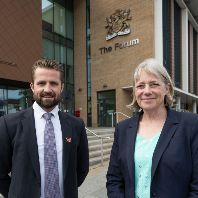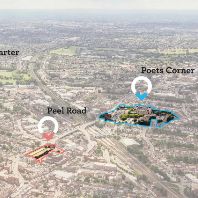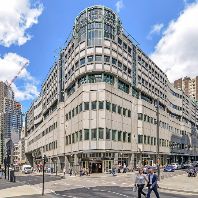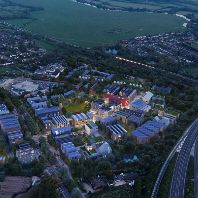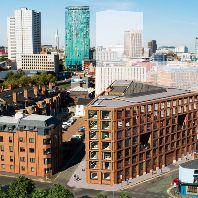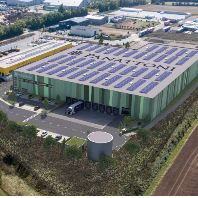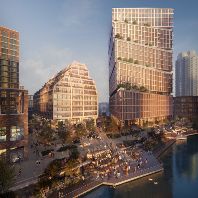The IPD UK Developments report, produced in association with Gerald Eve, has shown that the number of completed commercial property developments in 2012 was half that of a year before, as the stalled UK development pipeline delivered some of the lowest level of new space to the market in the last 30 years.
The report, which measures the performance of developments recorded in the IPD UK Annual Property Index, represents over 50% of the UK commercial property market, and found that just 40 commercial property developments were completed in 2012.
Over the last five years, developments in the UK have suffered from a lack of finance and the risk-averse mentality of investors. Only those with means of privately sourcing capital, or those able to pre-let, have been able to initiate new building plans.
However, despite the low levels of completions, returns for finished assets rose to 7%, their highest since 2007, as demand for the scarce supply of new and refurbished space drove up returns.
UK commercial property, in comparison, returned 3.4% in 2012, bonds 4.7%, and equities 10.2% (JP Morgan UK 7-10 yr, MSCI UK).
The spread in returns from the report highlights why it is difficult for lenders to commit to providing development finance. For all developments between 1983 and 2012, the top 25% of assets returned 10.5% on average, the bottom quartile just 0.3%.
Retail developments delivered the best returns for the year, with an IRR of 33.5%, from an equal mix of development types, while offices returned 7.6%.
Alternatives real estate asset developments, which returned 5.3%, were for the first time in the report's 30-year history, the most prevalent type of development. Healthcare, leisure, student accommodation and hotels accounted for over 40% of completions (private rented sector developments were not included in the report).
Funding for alternative real estate sectors is not necessarily any easier to obtain than for regular commercial developments, but different drivers of returns in these sectors, for instance a need for more healthcare for an ageing population, have encouraged other lenders and speculative developments.
Furthermore, lenders are less averse to providing finance to known and trusted clients, and the level of alternative developments may in part be due to those lenders that specialise in only alternative sectors, thus already knowing their clients, and are therefore happier to lend in adverse market conditions.
Only 30% of the developments measured were in Central London, showing that new building has not only been restricted to prime assets in the Capital.
In addition, 67% of completed developments in 2012 were started less than three years ago, which continues the recent trend of accelerating the building of developments to mitigate longer-term risks and changes in market cycles. For those developers lucky enough to begin building in 2009, the market has now improved substantially, and returns are higher accordingly.
However, in another marked shift from previous years the report identified that over 50% of those completed were refurbishments and redevelopments, meaning the actual number of new builds (or speculative developments), and pre-funded constructions fell to their lowest levels in the last 30 years, in part due to fears of the oversupply of UK offices and shops, and the comparatively cheap price of secondary assets that can be refurbished.
Phil Tily, IPD Managing Director for the UK and Ireland, said: “It has not come as a great surprise that the number of development completions in 2012 is the lowest on IPD’s record.
"With the average construction duration now between two and three years, we are now seeing completions of those developments that would have started in 2009 and 2010, arguably the most difficult economic period, and when traditional finance providers were not lending on developments as occupier and investor demand was constrained.
“Nevertheless, returns from developments are again on the rise and the report points to important emerging trends. Development of alternative property sectors are on the rise, while construction times are growing shorter, indicating a preference for refurbishments and smaller projects which can be brought to the market quicker.”
Robert Fourt, Partner at Gerald Eve, said: “7% for 2012 is a strong indication that overall development returns are not only back in positive territory, after the financial crisis, but also are exceeding the IPD standing investment all property return of 3.4%.
“In addition it should be recognised that it is only the median return, with upper quartile figures providing clear evidence that the rewards are potentially there for the additional risk being taken, giving some encouragement, at least to those wanting to get back into commercial development.”
Liz Peace, Chief Executive of the BPF said: “The research highlights just how difficult it has been to secure development finance during the economic crisis.
“No longer is it a given that you will walk into a bank and walk out with the necessary funding on agreeable terms for a development project. While alternative providers are slowly coming forward, their appetite remains selective and shows a bias towards central London.
“The De Montfort report recently showed that for consecutive years, no lending organization was prepared to offer terms for speculative development; and, of what little ‘new’ lending there was in 2012, only 5% went to commercial development.”
Source: IPD

